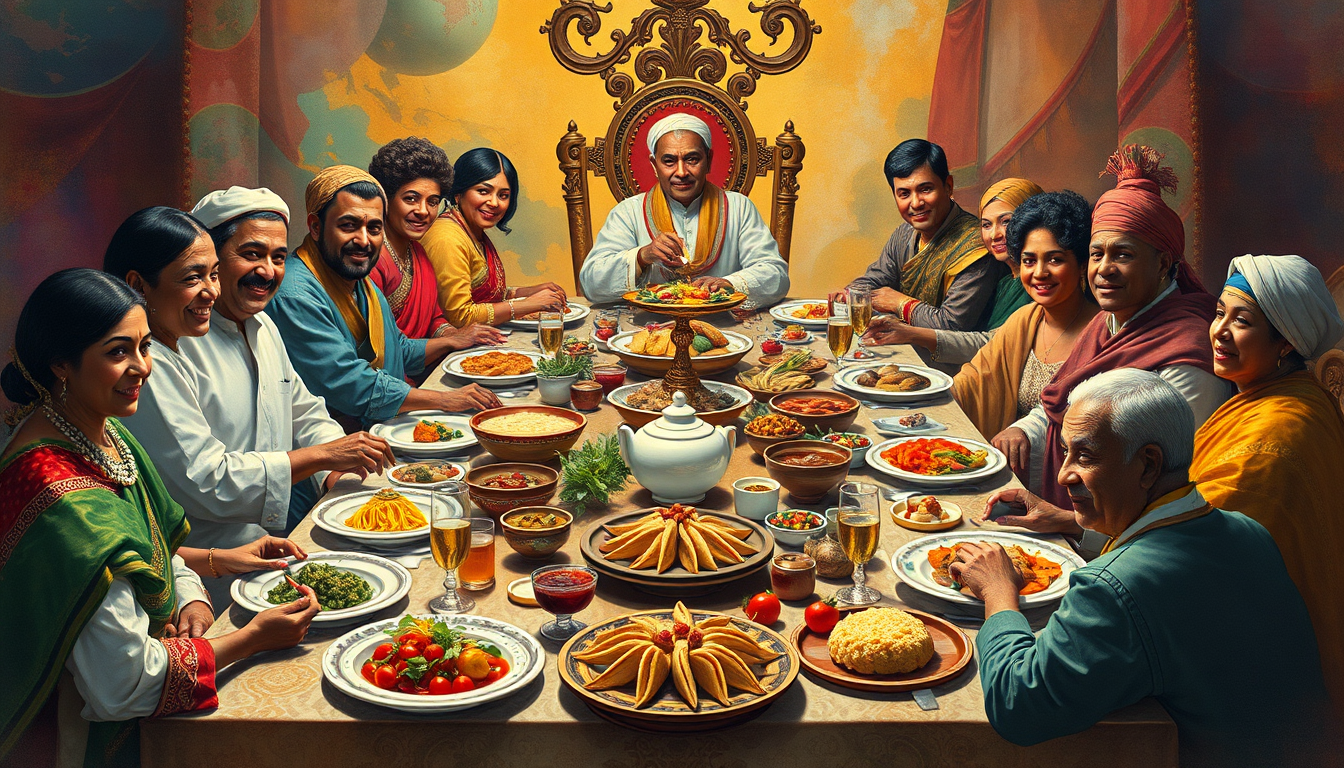
Food is an integral part of human culture and society, serving as a medium for expression, tradition, and connection. Dining etiquette varies dramatically across the globe, reflecting cultural norms, social structures, and historical influences. Understanding these diverse perspectives not only enriches our experiences but also fosters respect and appreciation for different customs. This blog post explores the intricacies of food and dining etiquette from various regions, shedding light on practices that range from the formal to the informal, and the traditional to the modern.
1. Asia: A Tapestry of Traditions
Japan: Precision and Respect
In Japan, dining etiquette is steeped in tradition and respect. The act of eating is considered a ritual, and the way food is prepared and presented reflects the seasons and the chef's skill. Key practices include:
- Chopsticks Usage: It is essential to hold chopsticks properly, avoiding the practice of sticking them upright in rice, which resembles funeral customs. Passing food directly from one set of chopsticks to another is also frowned upon.
- Slurping Noodles: Contrary to Western norms, slurping noodles is a compliment to the chef, indicating enjoyment of the meal.
- Saying “Itadakimasu”: Before a meal, it’s customary to say “Itadakimasu,” which expresses gratitude for the food.
India: A Communal Experience
Dining in India often emphasizes community and sharing. While practices can vary by region, several common etiquettes are observed:
- Eating with Hands: In many Indian households, eating with the right hand is traditional. It is important to wash hands before and after meals and to avoid using the left hand, which is considered unclean.
- Serving and Sharing: Food is often served on a communal platter, encouraging sharing. It’s customary to offer food to guests first as a sign of hospitality.
- Vegetarianism: Many Indians adhere to vegetarian diets for religious or cultural reasons, so it’s important to respect dietary preferences when hosting or dining out.
2. Europe: A Spectrum of Refinement
France: The Art of Dining
France is renowned for its culinary artistry and dining etiquette, which emphasizes pleasure, aesthetics, and formality:
- The Dining Sequence: Meals typically consist of multiple courses, starting with appetizers and ending with dessert. Each course is served on separate plates, and courses are enjoyed at a leisurely pace.
- Table Manners: Elbows on the table are considered impolite, and bread is often placed directly on the table rather than on a plate. It's also customary to keep your hands visible on the table but not to rest your elbows on it.
- Wine Etiquette: When toasting, eye contact is essential, and it’s polite to say “Santé!” (Cheers!) while clinking glasses.
Italy: La Dolce Vita
Italian dining is a joyous, familial affair, often marked by vibrant conversations and a relaxed atmosphere:
- Courses: Italians typically enjoy meals in a specific order: antipasto (appetizer), primo (first course, often pasta), secondo (main course, usually meat or fish), and dolce (dessert).
- Pasta Customs: It’s considered inappropriate to order spaghetti with meatballs in a traditional Italian restaurant, as these dishes are typically served separately.
- Coffee After Meals: Espresso is usually consumed after a meal, and ordering cappuccino post-lunch is seen as an Italian faux pas.
3. The Americas: Diverse Customs and Traditions
United States: Casual and Varied
In the U.S., dining etiquette can vary widely depending on regional and cultural backgrounds:
- Tipping: It’s customary to tip service staff 15-20% of the total bill, reflecting gratitude for good service.
- Casual Dining: Many American meals are informal, with a focus on convenience. Fast food chains have popularized quick dining, and etiquette may be relaxed in these settings.
- Special Dietary Considerations: With a growing awareness of dietary restrictions, restaurants often accommodate vegetarian, vegan, gluten-free, and other dietary needs.
Mexico: Family and Celebration
Mexican dining is characterized by its vibrant flavors and strong emphasis on family and hospitality:
- Meals as Gatherings: Family meals are often communal, with food served in large quantities for sharing.
- Warm Greetings: It’s common to greet everyone at the table with a handshake or hug, fostering a warm atmosphere.
- Traditional Celebrations: Special occasions often feature traditional foods, such as tamales or mole, with dining being a central part of the celebration.
4. Africa: Rich Traditions and Community Focus
Ethiopia: Injera and Sharing
Ethiopian dining is unique, emphasizing communal eating and traditional foods:
- Injera: This spongy flatbread serves as both a plate and an edible utensil, with various stews placed on top for sharing.
- Hand-Eating: Meals are eaten with the right hand, and it’s polite to feed others by offering a bite from your hand.
- Blessings and Prayers: It is common to start meals with a prayer or blessing, reflecting gratitude and respect for the food.
Morocco: Hospitality and Spices
Moroccan dining is a feast for the senses, blending flavors, colors, and aromas:
- Shared Platters: Meals are often served on a large communal platter, encouraging sharing and togetherness.
- Eating Etiquette: It’s customary to wash hands before eating, and guests are often served first as a sign of honor.
- Mint Tea Ritual: The serving of mint tea is a cherished ritual, symbolizing hospitality and welcome.
5. Middle East: Rich Heritage and Generosity
Lebanon: Food as Hospitality
Lebanese dining reflects a culture of generosity, flavor, and community:
- Mezze: Meals often begin with a variety of mezze (small dishes), encouraging sharing and sampling.
- Use of the Right Hand: Like many cultures, using the right hand for eating is essential. It’s polite to offer food to guests first.
- Tea and Coffee: Offering coffee or tea is a traditional gesture of hospitality, and it’s considered respectful to accept.
Conclusion
Food and dining etiquette around the world reveal rich cultural tapestries that speak to values of respect, community, and tradition. Understanding these customs enhances our appreciation of different cuisines and the people behind them. Whether sharing a meal with friends, exploring new flavors while traveling, or simply enjoying a home-cooked dish, being mindful of global dining etiquettes fosters a sense of unity and respect among diverse cultures. In a world that is increasingly interconnected, these shared experiences through food can pave the way for deeper connections and understanding.




